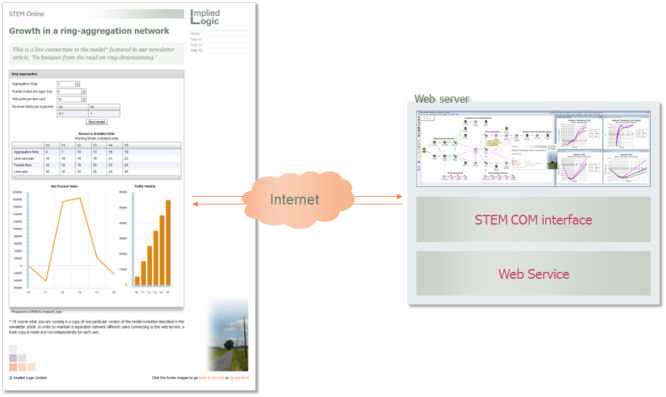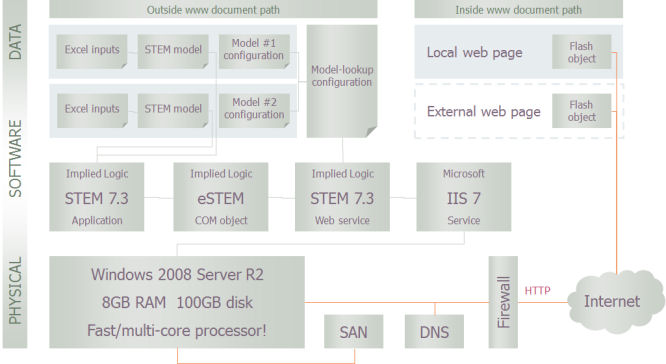The first commercial licence for eSTEM (Enterprise STEM) was signed in July.
The idea of a STEM model running via the web is now a reality. You can see a generic
example of the technology working in an interactive model presentation embedded in the accompanying
newsletter article,
Techniques from the road on ring dimensioning.
See it working now
In our previous April newsletter we introduced the new concept of a STEM model presented
within a Flash design in a web page, and actually running on a remote web server,
with the promise of the underlying technology being unveiled in October.

Figure 1: STEM model presented in Flash and running on a remote web server
In fact the technology is already working and the first commercial licence was signed
in July. While the intention remains to present the details of how it works at the
STEM User Group Meeting in October, we can demonstrate it live on our own web-server
now, as exhibited in the companion newsletter article,
Techniques
from the road on ring dimensioning.
If you are keen to see how this technology could make your existing activities with
STEM more immediately accessible to clients or colleagues, and cannot wait until
October, then please contact us to request a personalised demonstration via WebEx
based on a model of your own design.
No web programming skills are required
The technology to present STEM models via a Flash object embedded in a web page
will be presented in detail at the
STEM User Group Meeting event in October, along with the fuller impact of
the new STEM version 7.3. (Please don’t forget to
register if you have not already done so!)
In addition to explaining how this eSTEM technology works and talking through some
different use cases, we will also build a simple STEM model and export the necessary
Flash elements LIVE. This will demonstrate how we are now putting this technology
firmly in the hands of the user, without the dependence on third-party IT specialists
which was implicit in our original eSTEM offering.
While you will need the cooperation of your IT department to present anything on
the web in the first place, the Flash code required to make this work on the client
side is exported directly from new versions of STEM. The server-side implementation
is just a combination of a standard, web-service script (supplied by Implied Logic)
with a readily-configured folder structure for the model or models which you wish
to host.

Figure 2: Web-service software stack and hosted model folder structure
This web-based approach doesn’t just look modern: any sensitive data remains out
of harm’s way on the server. Best of all, the model can be fixed in situ independent
of the Flash interface if any design flaws emerge in that model after it has ‘gone
live’.